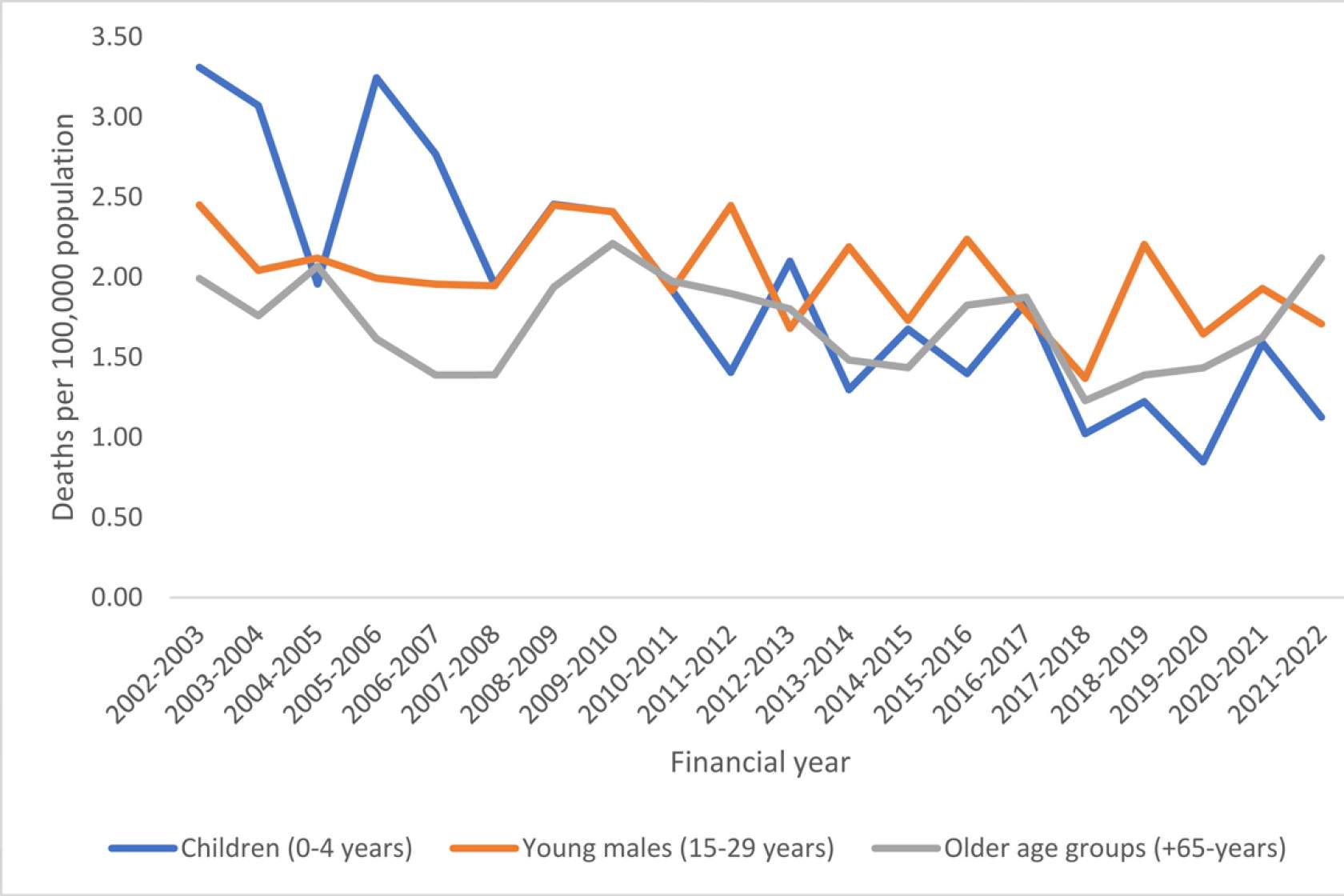20-year study shows Australian pool drowning down by 46 per cent

A comprehensive new Royal Life Saving Australia study has found a significant reduction in drowning rates, particularly among young children, but highlights continuing challenges among migrant and regional populations, and at rivers and beaches.
Published in the Australian and New Zealand Journal of Public Health, the research uses data from nearly 5700 unintentional drowning deaths between 2002 and 2022 and offers clear guidance to inform an update to the Australian Water Safety Strategy, which was released for consultation at the National Water Safety Summit in Sydney in July.
Drowning deaths decreased by 24.1 per cent over the past 20 years, with the greatest fall in drowning rates occurring in children aged 0-4 years (down 59.2 per cent). Drowning rates fell in all age groups, except those aged 15-17 years. Drowning rates in people aged 65-years and older now represent 20.1 per cent of drowning deaths over the study period (1.77 per 100,000 population) and have shown little change over 20 years.
Swimming pool drowning deaths have decreased by 46 per cent, when comparing the five-year averages of 2002-2007 to 2017-2022.
Drowning is defined as the process of experiencing respiratory impairment due to submersion/immersion in liquid, with three possible outcomes: death, morbidity and no morbidity.
Prevention an Australian priority
Although Australia has a relatively low burden of drowning compared to other countries, drowning prevention remains a major priority for government and civil society. Persisting challenges have prompted the development of various drowning prevention initiatives including pool fencing legislation, and the formulation of the Australian Water Safety Strategy (AWSS), first released in 1998. The current AWSS aims to reduce drowning by 50 per cent by the year 2030, reaffirming the nation’s strong commitment to enhancing water safety and reducing the impact of drowning. Australia leads the world in drowning research output.
Lead author of the study Lauren Miller of Royal Life Saving Society Australia and James Cook University says that Australia should be proud of the dramatic reduction in child drowning, which demonstrates the power of policy, education and community action.
But she says that our progress has stalled in key areas – particularly among older Australians and males at rivers or beaches.
Rivers and creeks were the leading location for drowning, representing 26.3 per cent of cases and falling by 21.6 per cent, followed by beaches (17.9 per cent) which showed no change in drowning rates over the 20-year period. Those living in remote or disadvantaged communities face the highest rates of drowning.
Males are nearly four times as likely as females to drown (3.7 times). Alcohol consumption remains a major factor, present in 23.9 per cent of drowning deaths, pre-existing medical conditions were present in 36 per cent, the majority recorded among older people.
This study highlights the need for a redoubling of water safety and drowning prevention efforts in a revitalised Australian Water Safety Strategy 2030.
“Our research shows drowning is not simply a childhood issue or limited to pools. It affects every Australian, in every part of the country. Investment in localised solutions, addressing alcohol and drug use, tackling disadvantage, and better data collection are essential if we’re to meet the Australian Water Safety Strategy goal of halving drowning deaths by 2030,” says Miller.
Authors cautioned that the reduction reported in this study is somewhat tempered by interim data reported in the 2024 National Drowning Report, which reported that drowning has increased in post pandemic years.
Royal Life Saving Research is supported by the Australian Government.
CAPTION: Crude fatal drowning rate over time by key people priority areas of the Australian Water Safety Strategy 2030: children (0-4 years), young males (15-29 years) and older age groups (+65-years).




